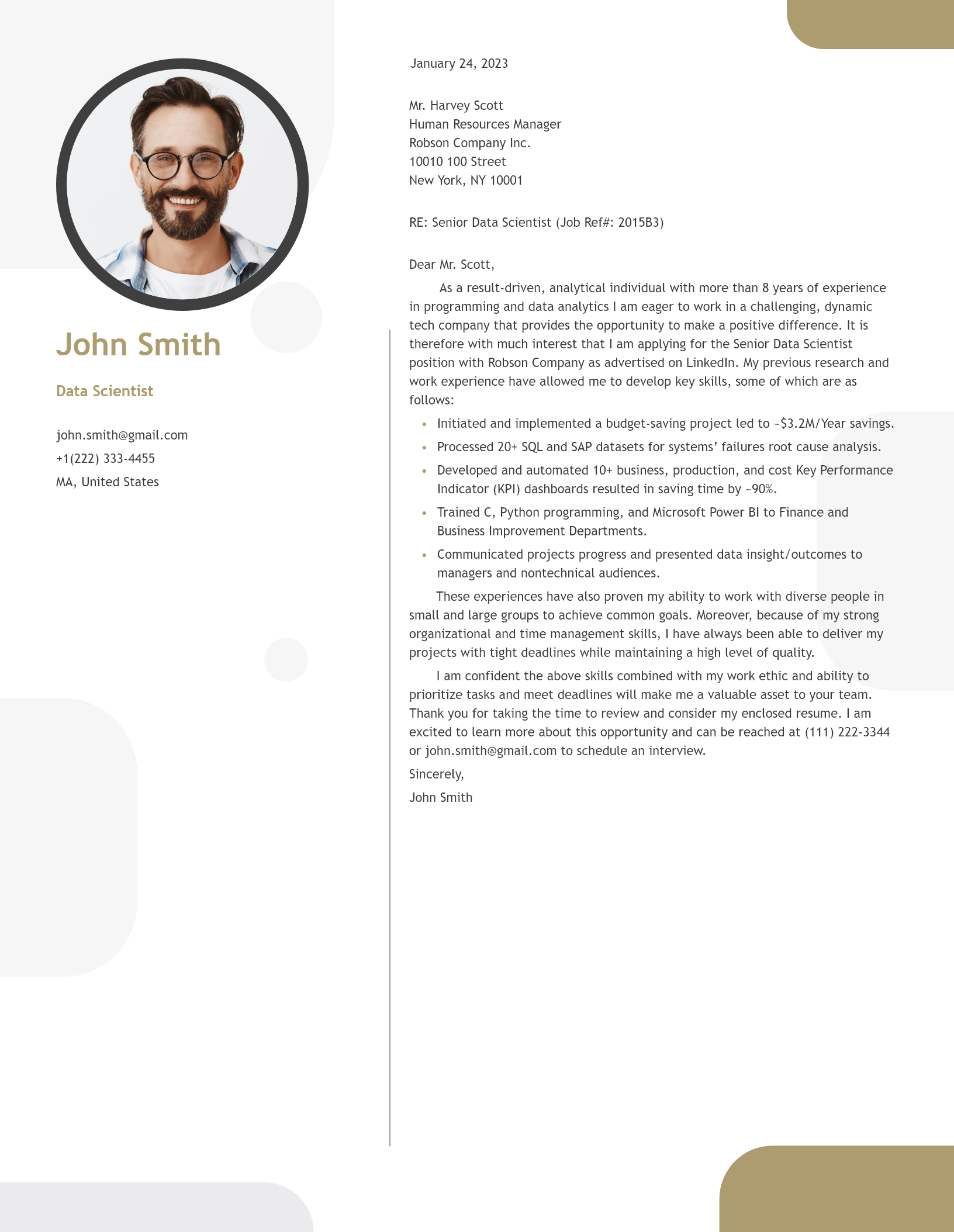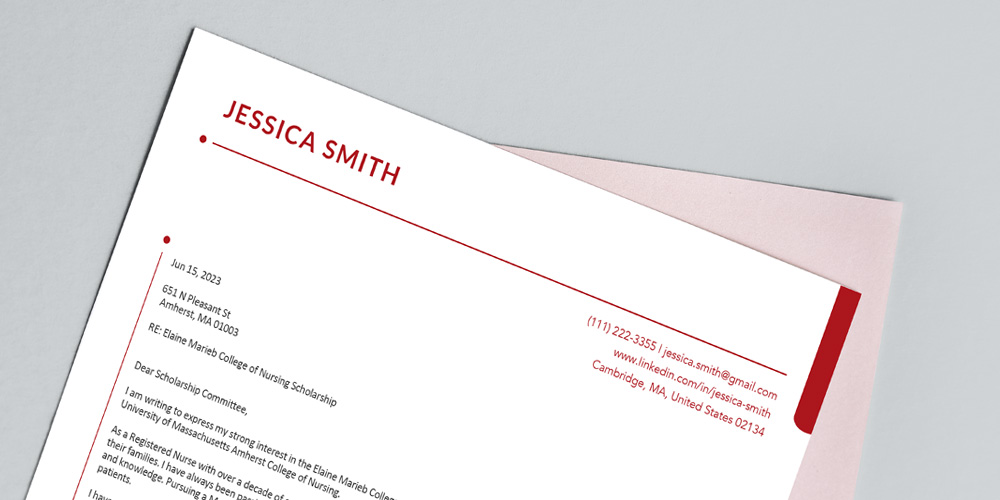
A well-written motivation letter can convince admission committees and hiring managers to move forward with your application or invite you for an interview. When you are presented with the question of “Why would you like to be part of this organization?” you do not want to be generic or basic. You are a special person who has a lot to offer, and there are genuine reasons behind your decision to apply.
In this guide, Radviser, your intelligent adviser, provides you with how to write a motivation letter for study or employment and brings some samples to help you write down yours from scratch. This will help you get accepted anywhere.
1. What Is A Motivation Letter?
A motivation letter is a document detailing your professional skills and reasons for applying for a program, course of study, scholarship, or job. This letter goes along with your application and other required documents, e.g., transcript(s) or a resume. A motivation letter accompanies an application to a university/company; it explains why you should be considered for a particular program/role, and it is used to evaluate your candidacy for that position.
The SoP (statement of purpose) is more about you as a person – it includes what drives and inspires you academically, as well as what your interests and professional desires are. Motivation letters are not usually requested for paid job applications, which are typically accompanied by cover letters.
The motivation letter should also include information about your skills, and it should discuss your interest in the program you wish to pursue; for example, your eagerness to earn a Bachelor of Science or Engineering at a university’s engineering department. It should strongly support the rest of the information covered in your application. Use SoP to provide deep, meaningful insights into your personality, background, and experiences, in particular, the ones that make you a unique and compelling candidate for the program you wish to tackle.
The differences between a Motivation Letter and a SoP are nominal. When writing a Motivation Letter or SoP, make sure what you communicate is clear, concise, and compelling. Ensure you communicate how your skills, background, and motivation make you an ideal candidate for the program.
2. How to Write A Motivation Letter?
Writing a good motivation letter takes time, so make sure you methodically work through the steps to make yours the best possible. Allowing plenty of time to write your motivation letter and make sure to include all the necessities and follow each important step, including the following:
- Outline
- Opening Paragraph
- Body Paragraph
- Closing Paragraph
- Proofreading the Letter

3. How to Structure a Motivation Letter?
A great motivation letter is a one-page letter where you talk about yourself, your story, and your interests. To structure your motivation letter, you can use the classic three-main paragraph structure where your letter has an introduction, the body, and the conclusion, or you can use the paragraph structure where the main body of the letter is divided into smaller 1-3 sentence paragraphs. If you want to be more factual and to the point, the second one might be the better choice. You can use each body paragraph to discuss specific points of accomplishment. Also, if you want to tell a story, go for the classic option and pay attention to the flow of your story. The following features can make your motivation letter stand out.

1. Outline
Write a bullet-point outline noting the content of your motivation letter and its order. Write points covering the following topics:
- Why do you want to pursue the program or apply for the position?
- What skills or qualities would you bring to the university or company?
- Why are you interested in the organization
Think critically about whether you include all relevant details. For instance, a motivation letter for a Ph.D. program needs more substance about your experiences and plans than a motivation letter for a bachelor’s program. Cross-reference your outline with information from the university or company to show you have the qualifications they are looking for. Assess your format and structure, and determine whether moving points around would create a more logical flow.
Revise your outline until you feel satisfied with it. You can reference your completed outline when writing your polished motivation letter to stay on track.
2. Opening Paragraph
Write an introduction that introduces yourself to the recipient. Address your recipient by name, if possible, to give your motivation letter a personal touch. Cover details about your achievements in this section because the opening paragraph should capture the recipient’s attention and encourage them to read the rest.
3. Body Paragraph
Expand the points in your outline to make your motivation letter’s body paragraphs. Write down a new paragraph for a new topic. Remember, your motivation letter aims to persuade the recipients of your value, so use compelling facts to be persuasive.
4. Closing Paragraph
The closing paragraph summarizes your goal and leaves a positive final impression. You should also thank your recipients for considering your application and encourage them to contact you if they have any questions.
5. Proofreading the Letter
Proofread your motivation letter to make it more concise and professional. Correct any spelling and grammatical errors. Change/remove information already mentioned in your application or resume and make sure your motivation letter contains unique information.
You may need to proofread your motivation letter several times to identify all issues. If you have enough time, try to do this step a few days after writing your motivation letter, as time away from your work allows you to view it more objectively. To help ensure your letter has professional grammar and spelling, ask your mentor, friend, or colleague to proofread your letter afterward.
Final Tips for Writing A Motivation Letter
Following tips can help your motivation letter stand out from the crowd and convince the decision-making committee to consider your application further.
- Follow any guidelines. Follow any formatting, length, and content guidelines provided by your prospective university/company. If they do not provide any details, write approximately 1/2 to one page of text with an easily readable 10- to 12-point font, like Times New Roman or Arial.
- Write with personality. Your interests, feelings, and attitudes are unique, so writing about them is excellent to separate your letter from others. Write in a natural voice that reflects how you would talk to your recipient if you were in a room with them. Include interesting details that help your motivation letter stand out from other candidates. Humor can be misinterpreted, so try to use a more serious tone.
- Use accessible language. An accessible language that readers can easily understand is best for motivation letters. Identify any unnecessarily complex terms or jargon when you are proofreading and replace them with plain language. Write short, active sentences that cannot be misunderstood or misinterpreted.
- Focus on your strengths. Emphasize your strengths rather than writing about your challenges or limitations. Talking about your strengths helps the recipients understand your value to their organization and keeps your letter’s tone positive.
To Sum Up
In this article, we discussed what a motivation letter is, how to write a motivation letter, and how to structure one. A motivation letter is a formal letter that everyone needs to apply for university/college admissions or a volunteering institution. Job applications usually need a cover letter. In this letter, you introduce yourself and your intent in the introduction, show your experiences in the body and thank the reader for the consideration in the conclusion. A motivation letter is usually attached to a resume. If you also want to make your resume stand out, read our guide on How to Write a Perfect Resume that Stands Out? (With Examples) and submit it with your motivation letter to get accepted anywhere. Radviser’s Library is filled with updated information about the journey you have ahead of you. Check it out and learn everything you need to increase your chances of being called for an interview.





